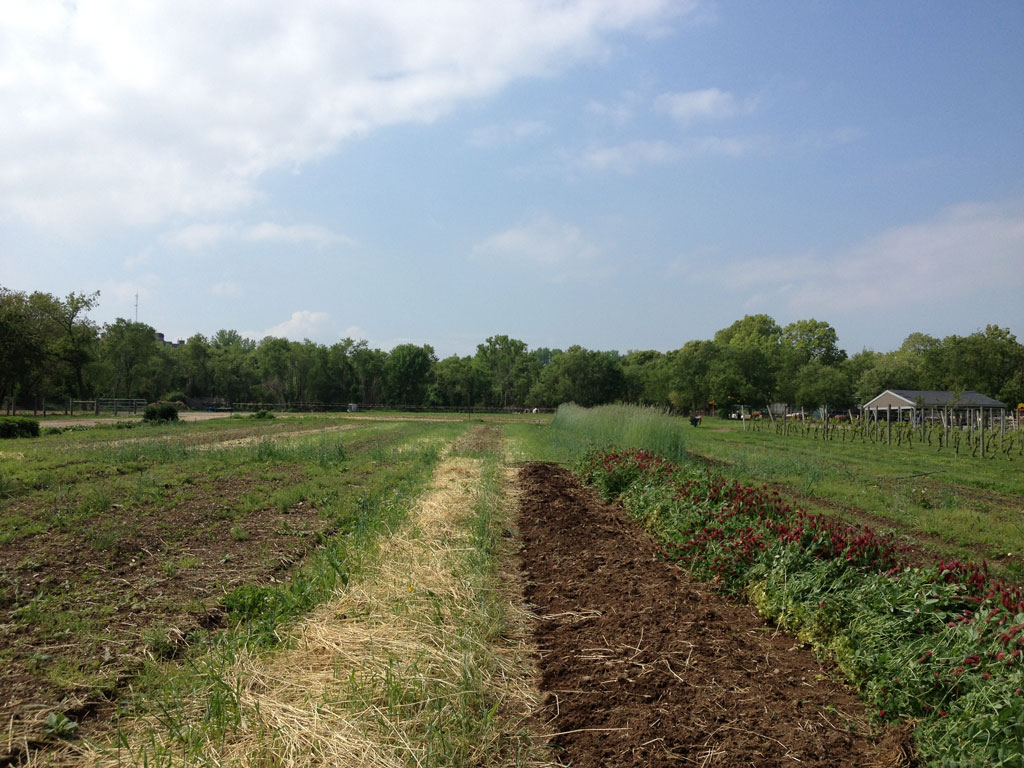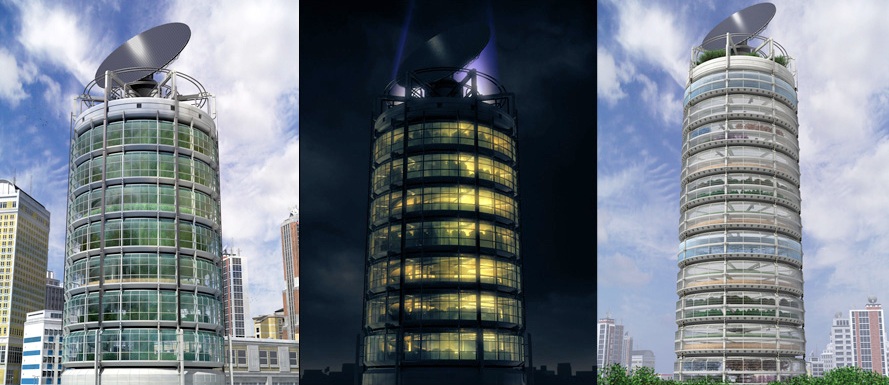What if Cities Looked a Little More Like Farms?
By Ciara Sidell ’15
I was raised in a high-rise apartment in Queens and had a view of the New York City skyline from my bedroom window. As a child, I found comfort in the bright lights and tall buildings of the city. I can still fall asleep to loud noises and flashing lights, but sadly the city’s hustle and bustle doesn’t comfort me as much as it once did. I now wish the city was a little more like a farm.
I was in kindergarten when I went on a field trip to the Queens County Farm Museum; I was captivated. The Queens Farm lies on 47 acres of land that has been farmed longer than any other plot of land in all of New York State. It really is an oasis of green in the concrete jungle! Since that kindergarten trip, I have been drawn over and over to the Queens Farm, more recently as a high school volunteer and then again in college as a summer intern. Long story short: combining my kindergarten trip with my food-conscious vegan upbringing has inspired me to study everything about food and piqued my imagination to wonder if, and how, cities could change. Upon graduating from college, will I be able get a job in New York City, joining a tide of business-suited execs on their morning commute, while dressed in my coveralls and heading to my farm in mid-town Manhattan? Apparently so; my very limited world of tofu and vegetables has opened a door to unlimited possibilities.

Source: Ciara Sidell
Urban agriculture seeks to re-embed food production into cities, and in doing so, revitalize communities and provide food for people whom the conventional food system fails to adequately feed. Most urban agriculture initiatives take shape in the form of community-based food projects like neighborhood gardens, farm to school programs, and farmers’ markets. But not all people benefit from such small-scale programs and no matter how many programs of the sort exist, they just can’t produce enough food to feed the masses. As a production-focused farm in the city, the Queens Farm is an anomaly.
I see a future where more Queens Farms exist; where concrete becomes permeable and vegetables occupy more land; where everybody, regardless of who they are, has access to farm-based food education and reasonably priced locally grown produce. It’s true that small-scale urban agriculture initiatives alone cannot make this vision a reality. Community gardens, farm to school programs, and farmers’ markets should act as teaching tools and stepping stools for cities along their journey towards food sovereignty – a future where everyone has the right to take part in and define their own sustainable food systems. In addition to these programs, I believe there is value in pursuing innovative urban agriculture projects like the development of commercially sized rooftop greenhouses and vertical farms.

Source: Chris Jacobs, Wikimedia Commons, 6 June 2008
Through utilizing rooftops or space within old warehouses, and growing in artificial conditions, greenhouses and vertical farms can produce yields comparative to conventional agriculture within city limits. As has already been proven at the world’s first vertical farm in Singapore and the world’s first commercially sized rooftop greenhouse in New York City, such innovations can produce at scale while using less water, less fertilizer, less land, and fewer agrochemicals than conventionalized agriculture.
Growing indoors with artificial light and within a controlled climate takes away weather- and climate-related agriculture challenges. Utilizing hydroponic methods even takes soil out of the equation. In such controlled conditions, there is a reduced need for agrochemical application. If such projects are located within city boundaries, food will travel fewer miles, ultimately reducing both fossil fuel emissions and the costs of transporting the food. Such programs are therefore both environmentally and economically sustainable. A killer combination! Combined with programs focused on the sociocultural sustainability and wellbeing of urban residents, larger-scale urban agriculture programs and urban food self-provision in general, could very well prove viable.
Community-based programs and technologically innovative agricultural systems can exist side by side within cities. Together, they can more sustainably integrate agriculture into all aspects of urban areas. This isn’t to say that all it takes to solve hunger disparities is some community work and technological innovation. State and national policies must come into play as well. Once the government aligns itself with the community and the community accepts the technology, my vision might just become reality.
From vertical farms to rooftop greenhouses and all of the small-scale community gardens in between, urban areas are beginning to grow more and more vegetables within their borders. I see a future where even more food grows in cities; where leafy greens grow on each and every balcony and beans climb up all public park fences; where locally grown vegetables can be purchased at reasonable prices from every food distributor in the city; and where every person has an abundance of healthy food to choose from and no one goes hungry.
I envision a future where I return to my childhood bedroom, look out of my high-rise apartment window, and see a city that looks a little more like a farm.
-
Categories:
- Sociology